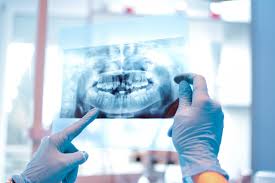
Dental X-ray
Why Choose Dovers Dental Clinic for Dental X-Rays in Lekki?
Detecting dental problems starts with cutting-edge imaging. At Dovers, we provide dental X-rays in Lekki that reveal issues invisible to the naked eye, using digital technology to ensure fast, accurate results for Lagos patients.
What Makes Dental X-Rays Necessary?
Many dental issues lurk beneath the surface, undetectable without imaging. In Lagos, where diets and habits can accelerate decay, X-rays are key. At Dovers Dental Clinic in Lekki, our dental X-rays pinpoint problems early, guiding effective treatment for lasting health.
What is a dental X-ray? It’s a safe imaging technique using low-dose radiation to capture detailed pictures of your teeth, roots, and jawbone. At Dovers, we use digital X-rays for Lagos patients, offering instant results with minimal exposure for precise diagnostics.
The Dental X-Ray Process at Our Lekki Clinic
Our X-ray process takes just minutes. After a brief consultation, we position small digital sensors, take the images, and review them instantly on-screen with you. At Dovers in Lekki, this efficient service provides Lagos patients with clear insights and immediate next steps.
Benefits of Dental X-Rays at Dovers Dental Clinic
Dental X-rays are a proactive tool—studies show they catch 60% more cavities than visual exams alone. At Dovers in Lekki, our digital X-rays ensure early detection and tailored care, saving Lagos patients time and expense with pinpoint accuracy.
Signs You Might Need a Dental X-Ray
These symptoms suggest underlying issues only X-rays can confirm. At Dovers Dental Clinic in Lekki, our dental X-rays reveal the root cause, ensuring Lagos patients get the right treatment without delay.
Why Dental X-Rays Are Worth It
Digital X-rays reduce radiation by up to 90% compared to traditional methods, making them a safe, smart choice. At Dovers, our dental X-rays in Lagos empower you with clear insights, protecting your smile and wallet long-term.
Book Your Dental X-Ray Appointment Today
Ready to uncover your dental health? Schedule your X-ray now and discover why Dovers is the top choice for dental imaging in Lekki and Lagos.
Questions about dental X-rays? Contact our skilled team at Dovers Dental Clinic for personalized guidance and support.


